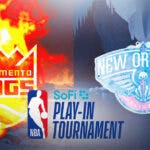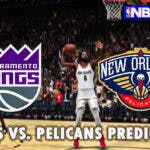Last season, Buddy Hield came closer to fulfilling Vivek Ranadivé's outlandish idea of his potential than most anyone ever anticipated. He wasn't Steph Curry, of course; no one is, and there's no guarantee anyone ever will be again. Ranadivé was always setting himself and Kings fans up for disappointment by suggesting Hield could develop into a close facsimile of the Golden State Warriors' two-time MVP when the Kings acquired him from the New Orleans Pelicans in the DeMarcus Cousins trade.
Still, Hield nevertheless staked his claim as one of the several best shooters in the world last season, making 278 threes at a 42.7 percent clip – a blend of quantity and accuracy only ever surpassed by Curry, per basketball reference. The eye test was arguably more impressive than the numbers, too. Hield became one of basketball's most versatile, imminently-threatening shooters in 2018-19, draining threes from every situation, platform, and angle imaginable.
Coming out of Oklahoma, it was fair to suggest that Hield's ceiling was something close to the fully-weaponized version of J.J. Redick we've seen over the past few years. Redick is no star, but he's one of the most impactful role players in the league, bending defenses to their breaking point every time he sprints around a screen or takes a dribble hand-off. But Hield has already proven himself a more fluid offensive player than Redick, and there's reason to believe he's not quite done expanding past assumed limits of his game, either.
The biggest progress Hield made last season came as a pull-up shooter. He set new career-highs by taking 3.0 off-dribble threes per game, connecting on 37.4 percent of those attempts, per NBA.com/stats. Only Curry and Khris Middleton reached those thresholds last season, the best evidence to date of Hield's ongoing evolution into a marksman without exploitable weakness.
But Hield showed enough flashes of effectiveness otherwise last season to leave you wanting more. As a playmaker, he'll always be held back by a lack of quickness and explosion. While he's made obvious strides as a passer, Hield won't ever be adept enough in that regard to function as his team's primary offensive option. While that's not a problem for the Kings with De'Aaron Fox around, it would still be immensely beneficial to their apex, long-term ambitions of sustained championship contention if Hield continued making strides as a supporting ball handler.
Hield averaged just 4.6 drives per game last season, per NBA.com/stats, a low number for a wing of his usage and production. Among 20-point scorers, only Klay Thompson, ensconced in Golden State's unique and historic offensive attack, averaged fewer free throws per game than Hield's 2.4, according to basketball reference. He fared well below-average as a pick-and-roll ball handler, and for a player with such an awesome sense of natural touch, still needs to develop a floater game after shooting an ugly 31.3 percent on two-pointers inside the paint but outside the restricted area.
There's only so much room Hield has left to improve in those areas. His deficiencies in each all stem from the fact that he doesn't have the initial burst necessary to get his shoulder past defenders, even though they're forced to play him air-tight to account for his jumper. Hield got better every season during his four years at Oklahoma due in part to increased knack and nuance with the ball in his hands, and took those aspects of his game to a new level in 2018-19, constantly utilizing fakes, hesitations, and high-level dribble moves to try and shake defenders. He was often successful, but that success resulted far more often in jumpers than attacks to the rim – a perfectly acceptable outcome for a shooter of his caliber, but not one that inherently creates easier scoring opportunities for his teammates.
Hield is already a great offensive player, and will keep adding subtlety on that end that makes him marginally more effective. But the same physical attributes that inherently limit his impact on defense do the same to his potential improvement as a playmaker, the next logical step for his game to take.
Not every star can be a primary or even secondary ball handler. Hield, impactful as he already is and will continue growing to be, seems to fit that bill.




